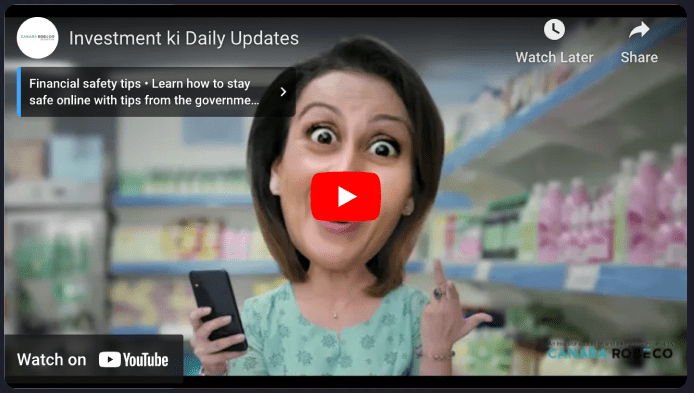
Get Started with Mutual Funds
Mutual Funds: Balancing Risk and Reward

Mutual Funds provide a wide variety of investment options to cater to different financial goals, timeframes, and risk preferences. Whether you are looking for stable income, long-term growth, or a balanced approach, these funds offer solutions tailored to meet diverse investor needs. By pooling resources and diversifying across asset classes, Mutual Funds help reduce risk while striving for optimal returns.
With proper planning and informed decision-making. Mutual Funds can become an essential tool in your financial portfolio. They allow you to align your investments with your objectives, enabling you to work towards wealth creation while managing risks effectively.
Decoding Risk-Adjusted Returns
Evaluate investments by balancing returns with the risks taken
What are Risk-Adjusted Returns?
Risk-adjusted returns combine the returns of an investment with the level of risk involved in achieving those returns. This concept provides a more accurate way of evaluating an investment’s performance by considering both profit and risk.
Tools for Measuring Risk-Adjusted Returns
Risk-adjusted returns combine the returns of an investment with the level of risk involved in achieving those returns. This concept provides a more accurate way of evaluating an investment’s performance by considering both profit and risk.
What are Risk-Adjusted Returns?
- Sharpe Ratio: Measures the excess return relative to the total risk (volatility). A higher Sharpe ratio indicates better risk-adjusted returns.
- Treynor Ratio: Focuses on the excess return compared to market risk (systematic risk). It evaluates how well an investment rewards investors for taking on Market risk.
Quantitative Informations
| Standard Deviation | Portfolio Beta | Portfolio Turnover Ratio | R-Squared | Sharpe Ratio |
|---|---|---|---|---|
| 19.25 | 1.15 | 0.43 | 0.85 | 0.37 |
Unveiling Fund Performance Metrics
Measure risk, assess returns, and make smarter investment decisions.
Sharpe Ratio
In arriving at the risk-adjusted returns, Sharpe ratio considers the returns generated by the fund and the risk-free rate (Government security/Treasury bills rates are considered as risk-free) to arrive at the excess rate.

If the fund/portfolio returns are 18% and the risk-free rate is 8%, the excess return generated by the fund is 10%. The fund has generated 10% over and above the risk-free rate, which is nothing but the “Risk premium” of the fund. Standard deviation is used to assess how much risk is involved in generating the excess returns. If the standard deviation of the fund is 4, then the Sharpe ratio of the fund is 2.50.
| Fund | Fund A | Fund B | Fund C | Fund D | Fund E | Fund F | Fund G |
| Sharpe Ratio | 0.64 | 0.38 | 0.68 | 0.27 | 0.39 | 0.28 | 0.54 |
| Standard Deviation | 16.86 | 17.98 | 14.84 | 18.74 | 20.02 | 16.75 | 14.13 |
When comparing the Sharpe ratio, the higher the ratios, the better the fund. In the above-mentioned illustration, Fund F and B have the higher Sharpe ratio in the fund category, which are better funds. The reason for the better Sharpe ratio is that the portfolio risk (Standard Deviation) of the fund is among the lowest.
Treynor Ratio
Both Sharpe and Treynor ratios measure risk-adjusted return. Treynor ratio uses mutual fund/portfolio beta while calculating risk-adjusted returns, whereas Sharpe ratio uses Standard deviation.

The interpretation of the ratio would remain the same: what is the risk taken to generate the excess returns? A fund with a higher ratio in the peer group is considered to be a better fund in the category.
Jensen’s Alpha:
Alpha is another risk-adjusted returns measurement tool that measures the fund manager’s outperformance. “Alpha gives the excess returns over the expected rate of return.” The objective of the investment is to generate optimum returns with the least possible risk. A fund/portfolio with higher Alpha among its peers would be the fund that generates higher returns with the least risk.
| Fund | Fund A | Fund B | Fund C | Fund D | Fund E | Fund F | Fund G |
| Alpha | 16.86 | 17.98 | 14.84 | 18.74 | 20.02 | 16.75 | 14.13 |
As per the illustration given above, Fund B and Fund F have higher Alpha in the category. They generate higher returns for the limited risk taken by the fund. Both of these funds could be ideal choices for an investor to have in their portfolio.
Expected rate of returns is arrived at by using the Capital Asset Pricing Model (CAPM). The CAPM uses market risk, i.e., Fund Beta, to compute the expected rate of returns (ER).
- ER = Rf + B * (Rm – Rf)
- ER = Expected rate of returns
- Rf = Risk-free rate
- B = Fund/portfolio beta
- Rm = Market returns










